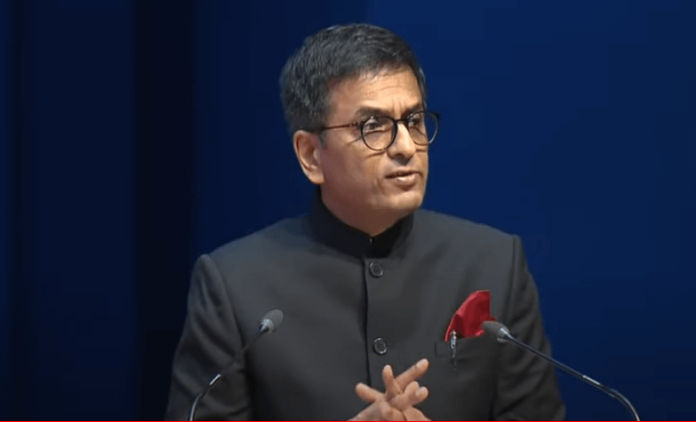Chief Justice of India DY Chandrachud on Wednesday said that the principles of the life of Dr. Bhim Rao Ambedkar, the Architect of Indian Constitution, should be followed by all.
Garlanding the statue of Babasaheb Ambedkar on his 66th death anniversary, the CJI said that this year, a statue of Dr. Ambedkar has been put up in the Supreme Court premises and it felt like Babasaheb was ‘amongst all of us’.
The country observes the death anniversary of Dr Ambedkar as Mahaparinirvan Divas on December 6.
The CJI said that the principles of the life of Dr Babasaheb Ambedkar should be followed by all including the youth.
He said these principles can be implemented by everyone in their day-to-day lives in many ways, adding that the country was following the principles that Babasaheb drafted 75 years back.
On November 26, President Droupadi Murmu had unveiled a statue of Babasaheb Ambedkar on the 74th Constitution Day of India. The statue was unveiled by President Murmu in the Supreme Court premises in the presence of Chief Justice of India D.Y. Chandrachud and Union Minister for Law and Justice Arjun Ram Meghwal.
The 7-foot-tall statue, portraying Dr Ambedkar wearing a lawyer’s dress and holding a copy of the Constitution in his hand, was brought to the Supreme Court premises from Manesar in Haryana. Mounted atop a pedestal, the statue of Dr Ambedkar has been placed on the front lawn and garden inside the Supreme Court premises.
Around 50 labourers worked in the Apex Court premises, to build the platform housing the statue. As per sources, the statue has been sculpted by famous sculptor Naresh Kumavat.
The decision to erect a statue of Dr. Ambedkar stems from the persistent request made by a group of lawyers who identify with the Ambedkarite movement. In December last year, they had penned a letter to Chief Justice of India DY Chandrachud asking for a statue of Dr. Ambedkar on the lawns of the Supreme Court. In September this year, the Supreme Court Arguing Counsel Association (SCACA) had also made a representation seeking the installation of the statue.
The Full Court of the Madras High Court had on April 11 reiterated its earlier decision to not have photos, statues or portraits of any leader other than Mahatma Gandhi and Saint Thiruvalluvar in courts and court premises in Tamil Nadu. The Court had, therefore, turned down requests made by various advocates associations to have a portrait of Dr Ambedkar inside courts in the State.
A circular was also issued by the Registrar General on July 7, which said that the Full Court took the decision in view of earlier resolutions passed since October 2008, when it had first rejected the plea by a lawyers’ group to display the portrait of Dr Ambedkar inside the Court. However, on July 25, the State government informed that status quo would be maintained insofar as the existing statues and portraits of Dr BR Ambedkar are concerned. Dr Ambedkar hailed from the Mahar caste, which was then an untouchable Dalit caste.
This resulted in Ambedkar struggling to gain access to even primary education. He eventually went on to hold 26 degrees and titles, becoming one of the most highly educated Indians of his generation. As Chairman of the Drafting Committee, Dr Ambedkar was known as the Architect of the Indian Constitution. The Supreme Court complex at present houses a statue of Mahatma Gandhi, which faces the Chief Justice of India’s court.


